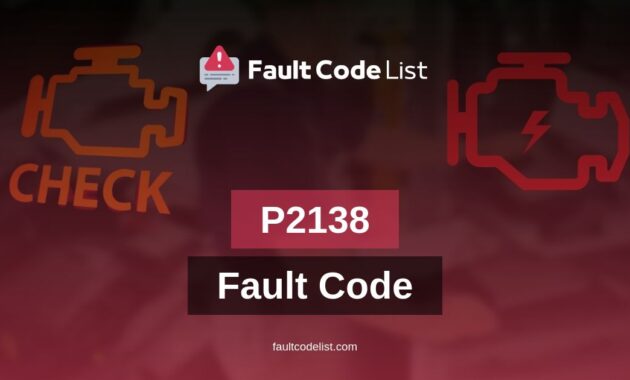Have you ever encountered the P2138 fault code in your car while engine light turns on? If you’re wondering what this code means, don’t worry, you’re not alone. The P2138 fault code indicates a malfunction in the throttle/pedal position sensor or accelerator pedal position sensor.
Reasons for the P2138 fault code
There are several reasons why the P2138 fault code shows up, including a faulty accelerator pedal position sensor, a malfunctioning throttle body, damaged wiring or connectors, or even a faulty engine control module. However, the most common reason for this error code is a malfunctioning sensor. Symptoms of the P2138 fault code: There are several symptoms that might occur when the P2138 fault code appears, such as reduced engine power, difficulty starting the engine, acceleration problems, stalling or idle surging, and even a complete inability to start the engine at all.

Solution to the P2138 fault code
If you’re facing the P2138 fault code, you don’t need to worry too much. You can take a few simple steps to identify and fix this issue. The first step is to check for loose or damaged connectors in the wiring harnesses. If you find any looseness or signs of damage, fix them right away. If the wiring and connectors are in good condition, you should replace the faulty sensor. Conclusion: In conclusion, the P2138 fault code can be an annoying problem for car owners. However, it doesn’t have to be a complicated issue. By identifying the cause and taking the necessary steps to fix it, you can get your vehicle back on the road in no time. Keywords related to P2138: throttle position sensor, accelerator pedal sensor, engine control module, wiring harnesses, faulty sensor.
Symptoms of the P2138 fault code:
- Reduced engine power
- Difficulty starting the engine
- Acceleration problems
- Stalling or idle surging
- Complete inability to start the engine at all
Reason for the P2138 fault code:
The most common reason for this error code is a malfunctioning sensor. Other reasons include a faulty accelerator pedal position sensor, a malfunctioning throttle body, damaged wiring or connectors, or even a faulty engine control module.
The first step is to check for loose or damaged connectors in the wiring harnesses. If you find any looseness or signs of damage, fix them right away. If the wiring and connectors are in good condition, you should replace the faulty sensor.
